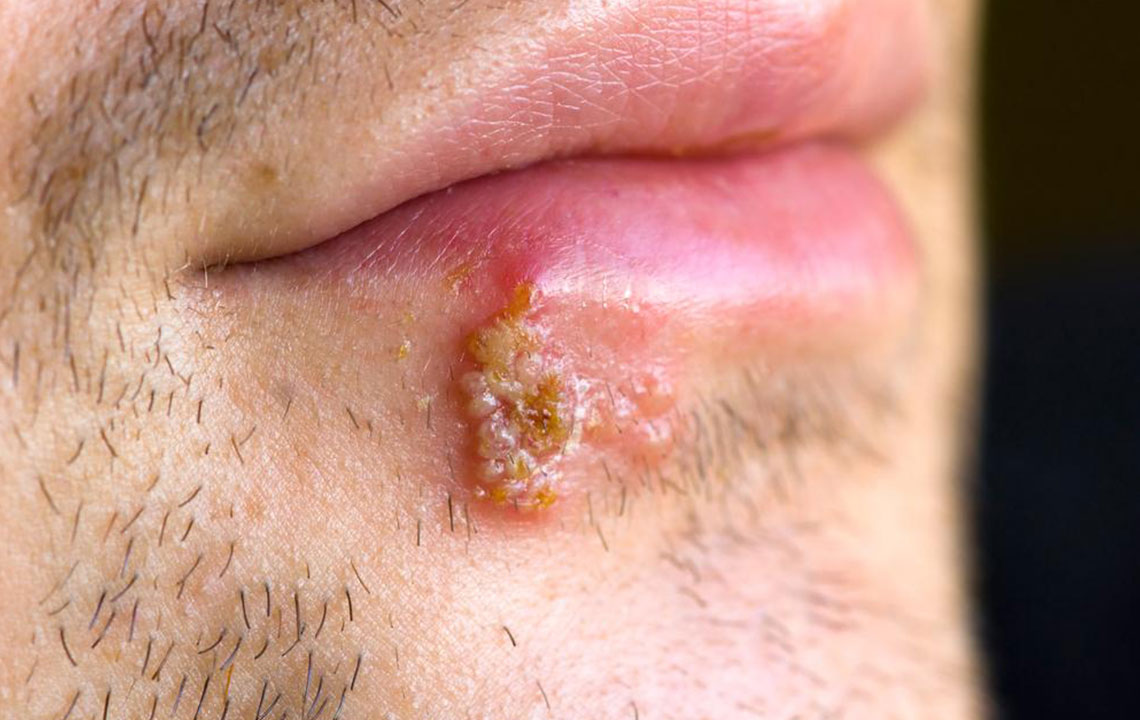Ways to Get Rid of Cold Sores

Mark, blemishes, sores or rashes on the face can give you sleepless nights. It is not just the dampening of look that makes you worry, the pain associated with them is also quite bothering. While pimples and acne is the most dreaded thing in this regard, cold sores too can be quite painful. If you have got cold sores and facing difficulty to get rid of them, you can follow some simple tips. In most of the cases, cold sores seldom require any medicinal treatment and can be healed with ease. Few home remedies to treat cold sores in a couple of days are mentioned below:
Vanilla extract – Take some pure and organic vanilla extract with a cotton pad or cotton swab. Now, soak the cotton in the vanilla extract till it gets saturated. Take the cotton pad and apply it directly on your sores. Keep it for a minute and wipe out the area. The alcoholic effect of vanilla extracts will help in relieving the sores. For the fastest results, you need to repeat the process for at least four times in a day.
Milk compress – Take a cup or half a cup whole milk and cotton balls. Dip the cotton ball in a teaspoon of milk and apply it directly on the sores. Keep the cotton on your sores for a few minutes before removing. Once you have removed the cotton, clean the residue with a wet towel and apply petroleum jelly if needed. Depending on your choice, you can either take milk in room temperature or use cold milk. Applying whole milk compress can heal the pain and offer a soothing effect. Immunoglobulins present in milk contain antibodies, which can help in the further outbreak of sores or herpes. L-lysine contained in milk too is useful for dealing with such conditions.
Licorice – One of the most common natural remedies for the treatment of cold sores, licorice can be applied easily in extract or powdered form. Just mix the required amount of licorice powder or extract in a teaspoon of water and apply it on the affected area. You can also dab a cotton swab in the paste made with licorice and water. Apply it to the affected area and leave it undisturbed for overnight.
Peppermint oil – Many of you may prefer peppermint oil for its natural freshness, but few know about its anti-viral property. To treat your cold sores with peppermint, you just need organic peppermint oil, fresh water, and a cotton swab. Rinse of your cold sores with water. Now, take a cotton ball and first dip it in fresh water. Once done, dip the wet ball in peppermint oil. Apply it on the sores. Using damp cotton is recommended as it dilutes the oil to reduce irritation on your skin. Doing this twice a day can help you in treating the condition in just a few days.
Cornstarch paste – Pain and burning sensation associated with cold sores can be relieved to some great extent by applying cornstarch on the affected area. Cornstarch is known for reducing the acid level of your skin and creating an alkaline state; cornstarch paste works by clearing the breeding ground of the virus. To get rid of cold sores, you just need to apply the cornstarch paste repeatedly to the affected area. Preparing the paste is also quite simple as you just need to mix one tablespoon cornstarch powder with one teaspoon water. Now, apply it on the cold sore and leave it undisturbed overnight. Wash it with fresh water in the morning and see the improvement. The amount of water can be increased depending on your requirement.
Aloe vera gel – Aloe vera is known as one of the best friends of your skin. Whether you have to remove any mark from your skin or looking for some quick relief to deal with cold sores, you can rely on aloe vera gel. To get a soothing effect, take an aloe leaf and break it. Apply the gel directly on your skin. In case, you cannot find an aloe leaf, purchase some organic aloe paste and dab a cotton ball in it. Apply the same on the affected areas and leave it on for a couple of minutes. Wash your skin with water.
Cold compress – If you are looking for a simple yet effective way to deal with cold sores, you can undoubtedly rely on a cold compress. Take a few ice-cubes in a towel and apply it on your affected skin. You can also use an ice-pack instead of wrapping ice in a towel. Repeat as often as possible, at least 4-5 times in a day.
Apart from applying different remedies, you also need to increase vitamin A and vitamin C in your diet. Also, you should be careful about your basic hygiene and never prick the cold sores with your nails as it can worsen the condition.


